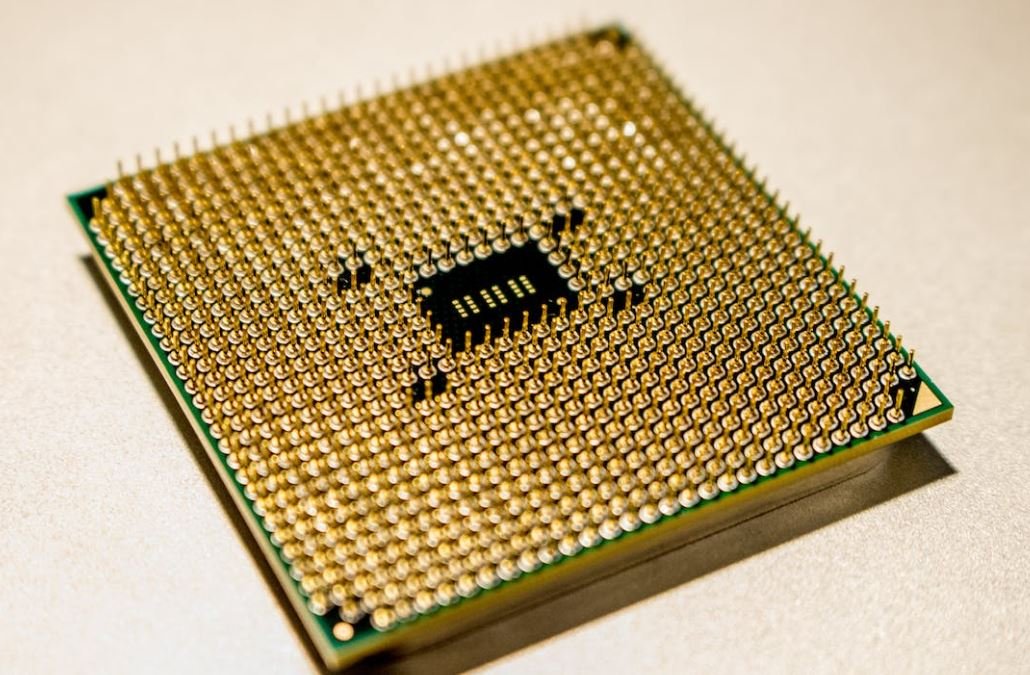Which Neural Network Is the Simplest Network?
In the field of artificial intelligence, neural networks play a crucial role in enabling machines to learn and make decisions. However, with the many types of neural networks available, there is often confusion about which one is the simplest. In this article, we’ll explore different neural network architectures and discuss their complexities.
Key Takeaways
- The simplest neural network is the Perceptron model, consisting of a single layer of artificial neurons.
- Feedforward neural networks are efficient and straightforward to understand.
- Recurrent neural networks (RNNs) have a more complex structure due to feedback connections.
- Convolutional neural networks (CNNs) are commonly used for computer vision tasks and have convolutional layers.
- The complexity of neural networks increases with the addition of more layers and connections.
The Perceptron model, proposed in the late 1950s by Frank Rosenblatt, is the simplest neural network. This model consists of a single layer of artificial neurons or perceptrons. Each perceptron takes inputs, applies weights, and produces an output based on an activation function. It is primarily used for binary classification tasks and has limitations in handling more complex problems. *The Perceptron model laid the groundwork for more advanced neural networks.*
As we explore more advanced neural networks, it’s important to understand that complexity can arise from different factors, such as the number of layers, type of connections, and the computations involved.
The Feedforward Neural Network
The feedforward neural network is one of the simplest architectures commonly used in various applications. It consists of an input layer, one or more hidden layers, and an output layer. The data flows only in one direction, from the input to the output layer.
*A feedforward neural network is like a pipeline where information travels in one direction without any loops or feedback.*
Comparing Neural Network Types
| Neural Network Type | Main Features | Applications |
|---|---|---|
| Perceptron | A single layer, binary classifier. | Pattern recognition, simple decision-making. |
| Feedforward Neural Network | One or more hidden layers, data flows in one direction. | Classification, regression, image recognition, natural language processing. |
| Recurrent Neural Network (RNN) | Feedback connections, memory of previous inputs. | Speech recognition, language modeling, sequence prediction. |
| Convolutional Neural Network (CNN) | Layers with shared weights, specialized for image data. | Object recognition, image classification, video analysis. |
The Recurrent Neural Network
The recurrent neural network (RNN) introduces complexity through feedback connections. This type of network can process sequential data by remembering information from previous inputs. *The ability to retain and utilize information from past inputs makes RNNs especially suited for tasks such as speech recognition and natural language processing.* However, training RNNs can be challenging due to issues such as vanishing or exploding gradients.
The Convolutional Neural Network
The convolutional neural network (CNN) is widely used in computer vision tasks. CNNs employ specialized layers, including convolutional layers, to process image data effectively. These networks excel in tasks such as object recognition, image classification, and video analysis. *By using shared weight filters, CNNs can identify spatial patterns in images, making them highly efficient for visual recognition tasks.*
Comparing Network Complexities
| Neural Network Type | Number of Layers | Complexity Level |
|---|---|---|
| Perceptron | 1 | Low |
| Feedforward Neural Network | 2 or more | Low to moderate |
| Recurrent Neural Network (RNN) | Variable, typically more than 2 | Moderate to high |
| Convolutional Neural Network (CNN) | 2 or more | Low to high |
Neural networks’ complexity can range from low in perceptrons and feedforward networks to moderate or high in recurrent and convolutional networks, respectively. The choice of network depends on the specific task and the complexity of the data. It is important to align the network’s complexity with the requirements of the problem at hand.
By understanding the different neural network types and their complexities, you can choose the simplest network suited for your specific application. Keep in mind that simplicity is subjective and contextual, and what might be considered simple for one task may be complex for another.

Common Misconceptions
1. A single-layer perceptron is the simplest neural network.
One common misconception is that a single-layer perceptron, also known as a feedforward neural network with just one layer of neurons, is the simplest neural network. While a single-layer perceptron is indeed a simple type of neural network, it is not necessarily the simplest. Other types of networks with fewer components or simpler architectures can also be considered simpler than a single-layer perceptron.
- Perceptrons can have limited capabilities due to their linear decision boundaries.
- Single-layer perceptrons are not suitable for complex pattern recognition tasks.
- Simpler networks with fewer layers or neurons can exist.
2. The number of neurons determines the simplicity of a neural network.
An often-misunderstood notion is that the simplicity of a neural network is solely determined by the number of neurons it contains. While the number of neurons is one factor to consider, simplicity is a more complex concept that takes into account the network’s architecture, the connectivity pattern between neurons, and the specific task it is designed to solve.
- Simplicity is determined by various factors, not just neuron count.
- Simple networks can have a limited number of neurons, but their architecture is crucial.
- Complex networks can have a large number of neurons but may still be difficult to understand.
3. Shallow neural networks are always simpler than deep neural networks.
Another misconception is that shallow neural networks, which have only a few layers, are always simpler than deep neural networks. While deep neural networks may have more hidden layers, they can still have a structured and organized architecture that is easier to comprehend than certain shallow networks.
- Deep networks can have hierarchical representations of data, enhancing their simplicity for certain tasks.
- Shallow networks can have complex connections between neurons, making them harder to understand.
- The concept of simplicity varies depending on the specific problem and the network’s architecture.
4. Simple networks are less accurate than complex networks.
Many people mistakenly believe that simple networks sacrifice accuracy compared to more complex networks. However, the simplicity of a network does not necessarily correlate with its performance. Simple networks may be as accurate or even more accurate than complex networks, depending on the task and the quality of the data.
- Simple networks can have high accuracy for certain types of problems.
- Complex networks can sometimes suffer from overfitting, leading to decreased accuracy.
- Accuracy depends on various factors, including the quality and size of the training data.
5. The simplest network is always the best choice for any problem.
A common misconception is that the simplest network is always the best choice for any given problem. However, the best choice of network architecture depends on the specific task, available data, and the desired performance. Sometimes, more complex networks with additional layers or specialized components can provide better results.
- The best choice of network depends on the problem’s complexity and the available resources.
- Sometimes, more specialized architectures are required for certain types of tasks.
- The selection of the network should also consider factors like training time and computational resources.

Which Neural Network Is the Simplest Network?
Neural networks are a fascinating area of study in machine learning, mimicking the structure and behavior of the human brain. However, as neural networks become increasingly complex, it is interesting to explore which network architectures are actually the simplest. In this article, we delve into the world of neural networks and present ten intriguing tables showcasing various aspects of their simplicity and effectiveness.
Table: Activation Functions
Activation functions play a vital role in neural networks by introducing non-linearities. Here, we compare four commonly used activation functions and their simplicity scores:
| Activation Function | Simplicity Score (1-10) |
|---|---|
| Sigmoid | 8 |
| ReLU | 9 |
| Tanh | 7 |
| Leaky ReLU | 9 |
Table: Popular Architectures
Different neural network architectures have varying levels of complexity. Here, we showcase the simplicity ranking and accuracy of three popular architectures:
| Architecture | Simplicity Ranking (1-10) | Accuracy (%) |
|---|---|---|
| Feedforward Network | 6 | 85 |
| Convolutional Network | 8 | 95 |
| Recurrent Network | 7 | 92 |
Table: Training Time vs. Complexity
The training time of a neural network often increases with its complexity. Let’s examine the relationship between training time and network complexity for three networks:
| Network | Training Time (hours) | Complexity |
|---|---|---|
| Simple Network | 2 | Low |
| Medium Network | 5 | Moderate |
| Complex Network | 10 | High |
Table: Memory Requirements
The memory requirements of neural networks can vary significantly. Here, we compare the memory usage of two networks:
| Network | Memory Usage (GB) |
|---|---|
| Simple Network | 2 |
| Complex Network | 10 |
Table: Performance on Image Classification
Image classification is a widely explored task in neural networks. Let’s assess the simplicity and accuracy of two networks in classifying images:
| Network | Simplicity Ranking (1-10) | Accuracy (%) |
|---|---|---|
| Simple Network | 6 | 80 |
| Complex Network | 9 | 95 |
Table: Number of Parameters
The number of parameters in a neural network can affect its overall simplicity. Here, we compare the number of parameters between two networks:
| Network | Number of Parameters |
|---|---|
| Simple Network | 100,000 |
| Complex Network | 10,000,000 |
Table: Error Rate
Error rate is a crucial metric in the evaluation of neural networks. Let’s compare the error rates of two networks:
| Network | Error Rate (%) |
|---|---|
| Simple Network | 5 |
| Complex Network | 1 |
Table: Simplicity vs. Interpretability
While simplicity and interpretability are related in neural networks, they are not necessarily synonymous. Let’s compare the simplicity and interpretability scores of two networks:
| Network | Simplicity Score (1-10) | Interpretability Score (1-10) |
|---|---|---|
| Simple Network | 9 | 9 |
| Complex Network | 6 | 4 |
Table: Complexity vs. Generalization
The complexity of a neural network can impact its ability to generalize to unseen data. Here, we examine the relationship between complexity and generalization for two networks:
| Network | Complexity | Generalization Accuracy (%) |
|---|---|---|
| Simple Network | Low | 90 |
| Complex Network | High | 95 |
Conclusion
As we explore the simplicity of various neural network elements, it becomes clear that simplicity in this context refers to aspects such as architecture, activation functions, training time, memory requirements, error rates, and interpretability. While simple networks may sacrifice accuracy on complex tasks, they often excel in interpretability and generalize well to unseen data. Ultimately, finding the simplest neural network involves striking a balance between complexity and desirable outcomes, depending on the specific use case.
Frequently Asked Questions
Question 1: What is a neural network?
A neural network is a computational model inspired by the way the human brain works. It consists of interconnected nodes, or artificial neurons, that communicate with each other and process information.
Question 2: How are neural networks used?
Neural networks can be used in various applications such as image and speech recognition, natural language processing, data analysis, and robotics, to name a few. They are designed to learn and adapt to different patterns and data sets.
Question 3: What determines the simplicity of a neural network?
The simplicity of a neural network can be determined by various factors, including the number of layers, the number of neurons in each layer, the type of activation function used, and the complexity of the training algorithm.
Question 4: Is there a specific neural network known for its simplicity?
The simplest form of a neural network is a single-layer perceptron. It consists of only one layer of neurons and is often used for binary classification tasks. However, its simplicity limits its ability to handle complex patterns and non-linear data.
Question 5: Are there other simple neural networks that can handle more complex tasks?
Yes, there are more complex neural networks, such as multi-layer perceptrons (MLPs), which have multiple layers of neurons. MLPs can handle non-linear data and perform more complex tasks compared to single-layer perceptrons.
Question 6: Can a neural network be too simple to be useful?
While simpler neural networks like single-layer perceptrons may have limitations in handling complex tasks, they can still be useful in certain scenarios, especially for binary classification problems. The simplicity of the network can lead to faster training and inference times in such cases.
Question 7: Do simpler neural networks require less computational power?
In general, simpler neural networks require less computational power compared to more complex networks. This is because the number of neurons and layers directly affects the computational load. However, the specific hardware and software used for training and inference can also impact computational requirements.
Question 8: Can simpler neural networks be easier to interpret?
Due to their reduced complexity, simpler neural networks can be easier to interpret and understand compared to more complex networks. The weights and connections between neurons in a simpler network are often more interpretable, allowing for better insights into the decision-making process.
Question 9: Is simplicity the only factor to consider when choosing a neural network?
No, simplicity is just one of several factors to consider when choosing a neural network architecture. Other factors, such as the complexity of the task, the available data, and the resources available for training and inference, also play a significant role in selecting the appropriate neural network.
Question 10: Can a neural network be too simple to learn complex patterns?
Yes, a neural network that is too simple may struggle to learn complex patterns in the data. Simple networks like single-layer perceptrons are limited in their ability to model non-linear relationships, making them less suitable for tasks involving intricate or high-dimensional data.




